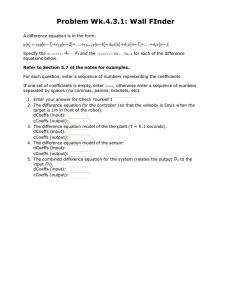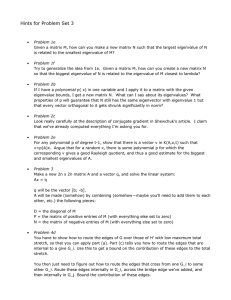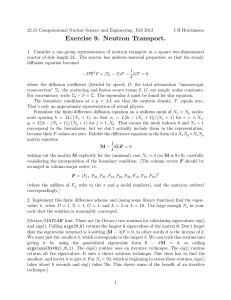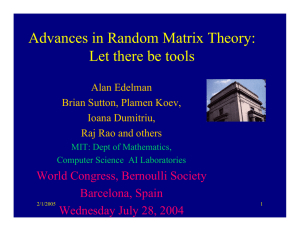Lecture #9 Instructor Notes
advertisement
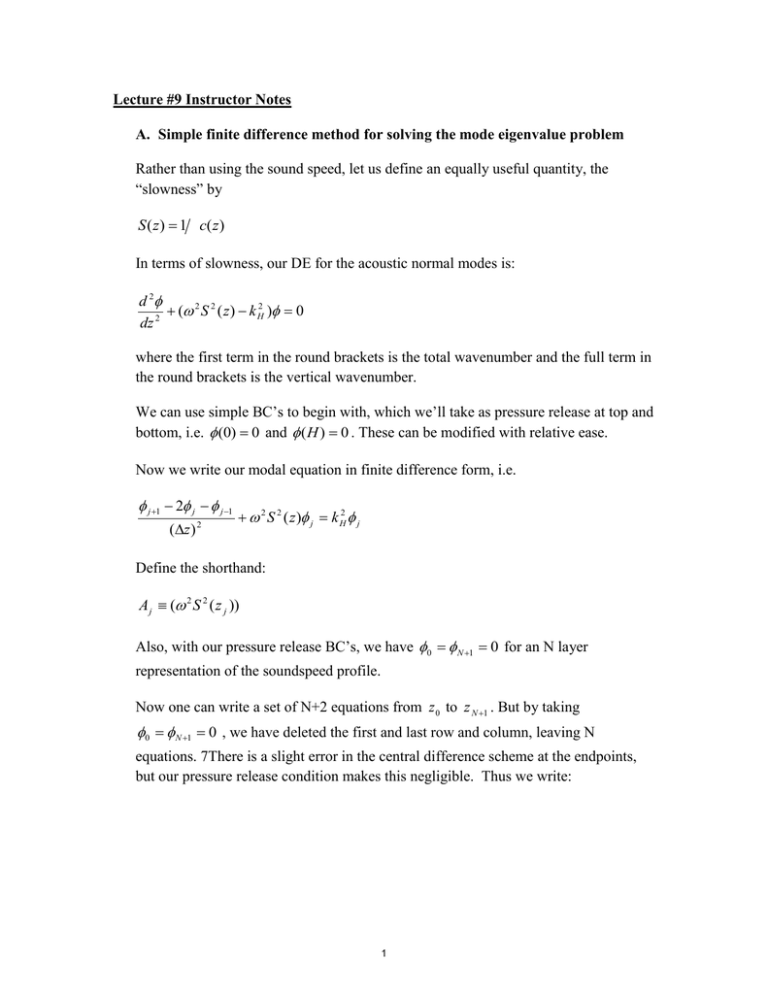
Lecture #9 Instructor Notes A. Simple finite difference method for solving the mode eigenvalue problem Rather than using the sound speed, let us define an equally useful quantity, the “slowness” by S ( z ) 1 c( z ) In terms of slowness, our DE for the acoustic normal modes is: d 2 ( 2 S 2 ( z ) k H2 ) 0 2 dz where the first term in the round brackets is the total wavenumber and the full term in the round brackets is the vertical wavenumber. We can use simple BC’s to begin with, which we’ll take as pressure release at top and bottom, i.e. (0) 0 and ( H ) 0 . These can be modified with relative ease. Now we write our modal equation in finite difference form, i.e. j 1 2 j j 1 (z ) 2 2 S 2 ( z ) j k H2 j Define the shorthand: A j ( 2 S 2 ( z j )) Also, with our pressure release BC’s, we have 0 N 1 0 for an N layer representation of the soundspeed profile. Now one can write a set of N+2 equations from z 0 to z N 1 . But by taking 0 N 1 0 , we have deleted the first and last row and column, leaving N equations. 7There is a slight error in the central difference scheme at the endpoints, but our pressure release condition makes this negligible. Thus we write: 1 If we make two more definitions for notational convenience, as below, we can write 2 This is a simple tridiagonal form, and standard eigenvalue routines can be found in MATLAB, Mathematica, etc. to obtain solutions. 3 MIT OpenCourseWare http://ocw.mit.edu 2.682 Acoustical Oceanography Spring 2012 For information about citing these materials or our Terms of Use, visit: http://ocw.mit.edu/terms.



